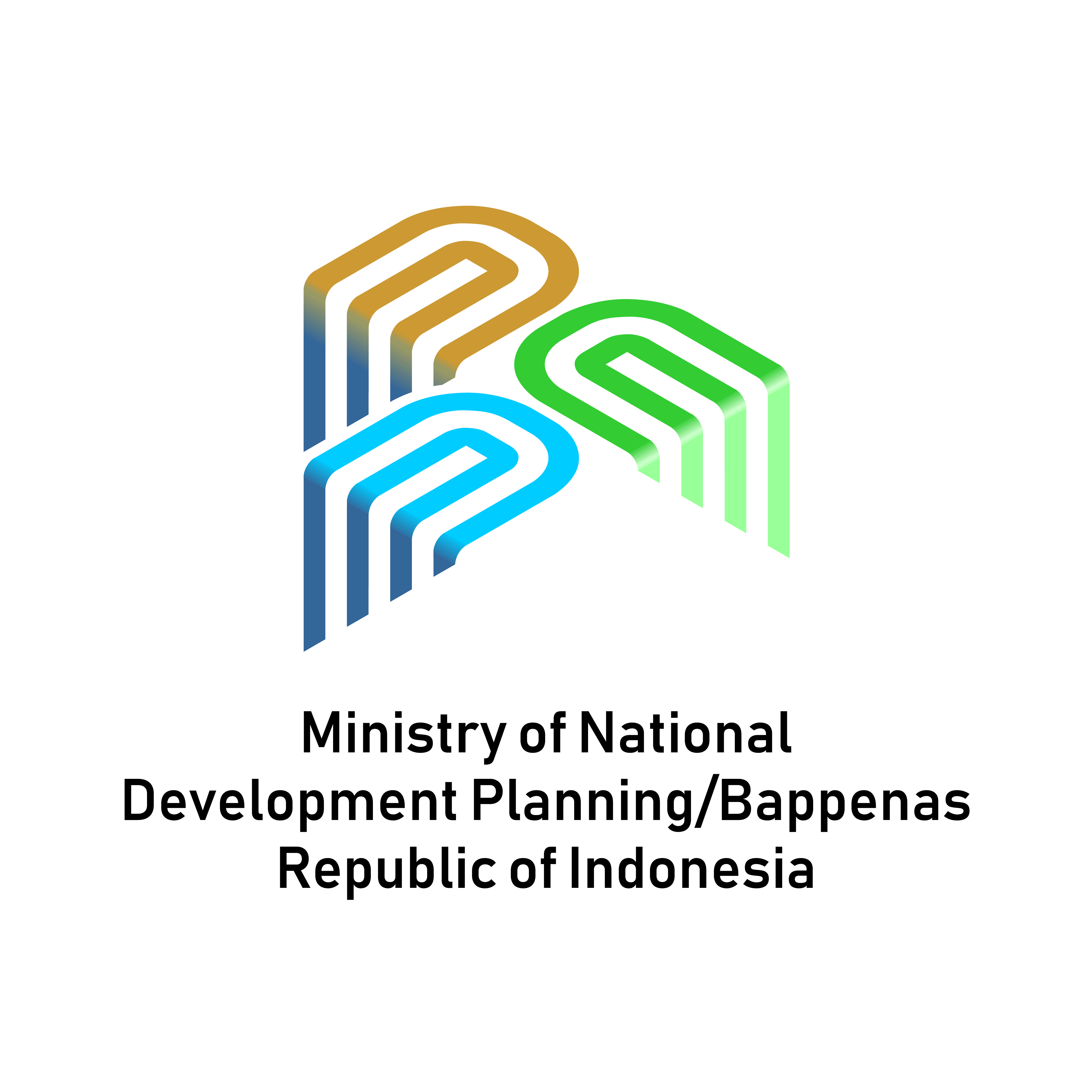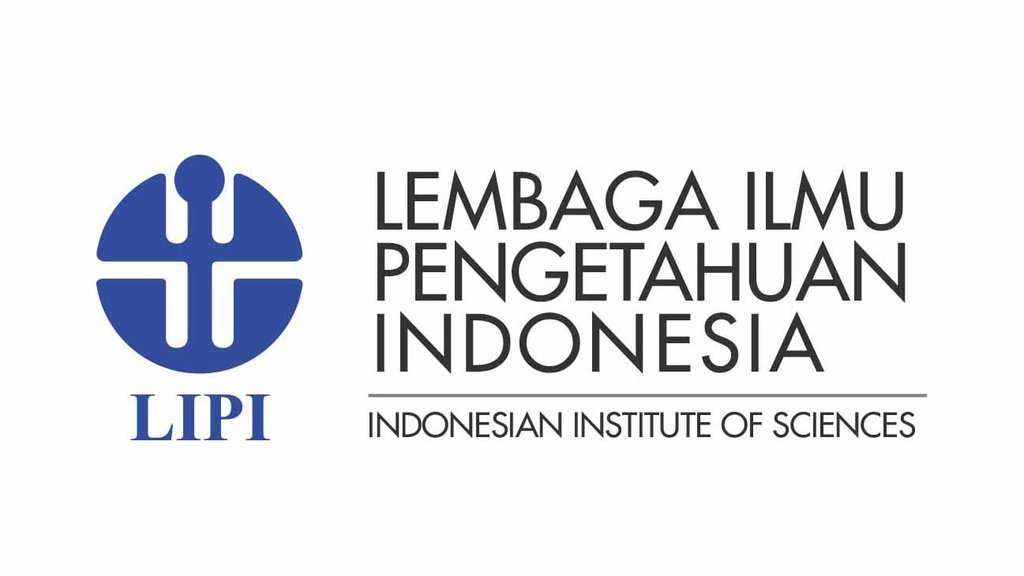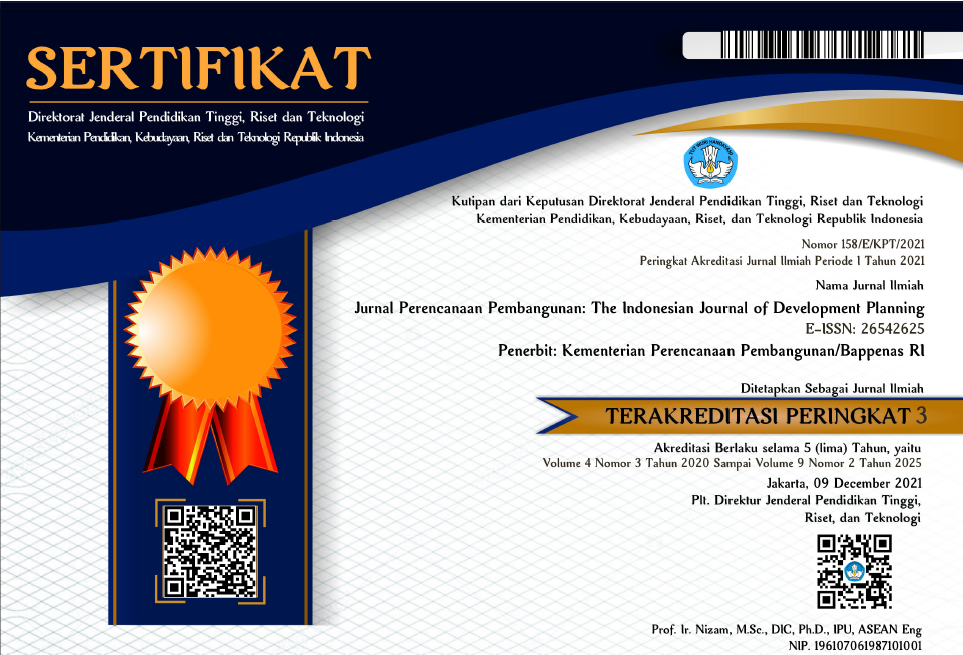The Relationship of Government Support in the Tourism Sector to the Level of Economic Inclusivity in the Regions
DOI:
https://doi.org/10.36574/jpp.v7i3.516Keywords:
Inclusive Economy, Government Support, Tourism, Panel Data RegressionAbstract
Economic development that creates broad access and opportunities for all segments of society, fosters equitable prosperity, and reduces disparities between groups and regions has been a global challenge up to today. The lack of an inclusive economy leads to higher inequality in regions, specifically for underprivileged communities in underdeveloped regions. In line with this, the government has encouraged the development of new tourism to boost economic growth aiming to reduce regional development disparities. However, empirical studies that prove the relationship between tourism and economic inclusiveness still need to be completed due to limited data in measuring economic inclusiveness. Using the Inclusive Development Index with panel data regression from 514 districts in Indonesia from 2016 to 2019, it is expected that this study will contribute to the literature, primarily related to inclusive tourism development. This study detected that government spending has a significant but adverse relationship with the level of economic inclusivity in the regions.
Downloads
References
Alam, M. S., & Paramati, S. R. (2016). The impact of tourism on income inequality in developing economies: Does Kuznets curve hypothesis exist? Annals of Tourism Research, 61, 111–126.
Ali, I., & Son, H. H. (2007). Measuring inclusive growth. Asian Development Review, 24(1), 11.
Anand, S., & Kanbur, S. R. (1993). The Kuznets process and the inequality—development relationship. Journal of development economics, 40(1), 25-52.
Anwar, J. M. (2012). Poverty alleviation through sustainable tourism: a critical analysis of ‘pro-poor tourism’ and implications for sustainability in Bangladesh. Unpublished Ph. D. Thesis. Ritsumeikan Asia Pacific University. Malaysia.
Artiles, A. J., & Dyson, A. (2005). Inclusive education in the globalization age. Contextualizing inclusive education, 37-62.
Badan Perencanaan Pembangunan Nasional (Bappenas). Indeks Ekonomi Inklusif Tahun 2016-2019. Dalam http://inklusif.bappenas.go.id//data diakses Februari 2022.
Badan Pusat Statistik (BPS). Rata-Rata Lama Sekolah Tahun 2016-2019. Dalam https://www.bps.go.id/indicator/26/415/2/-metode-baru-rata-rata-lama-sekolah.html diakses Juni 2022.
Badan Pusat Statistik (BPS). Produk Domestik Regional Bruto Kabupaten/Kota di Indonesia Atas Dasar Harga Konstan 2010 Tahun 2016-2019. Dalam https://www.bps.go.id/publication/produk-domestik-regional-bruto-kabupaten-kota-di-indonesia-2016-2020.html diakses Februari 2022.
Badan Pusat Statistik (BPS) Berbagai Provinsi. Jumlah Penduduk Tahun 2016-2019. Dalam https://www.bps.go.id/ diakses Februari 2022.
Bakker, M., & Messerli, H. R. (2017). Inclusive growth versus pro-poor growth: Implications for tourism development. Tourism and Hospitality Research, 17(4), 384-391.
Bakker, M. (2019). A conceptual framework for identifying the binding constraints to tourism-driven inclusive growth. Tourism Planning & Development, 16(5), 575-590.
Bourguignon, F., & Morrisson, C. (1998). Inequality and development: the role of dualism. Journal of development economics, 57(2), 233-257.
Brida, J. G., & Pulina, M. (2010). A literature review on the tourism-led-growth hypothesis.
Carrascal Incera, A., Fernandez Fernandez, M., & Pereira Lopez, X. (2015). Spillover effects of tourism consumption between Galicia and the rest of Spain. International Journal of Tourism Research, 17(2), 185-195.
Chen, Z., & Haynes, K. E. (2017). Impact of high-speed rail on regional economic disparity in China. Journal of Transport Geography, 65, 80–91.
Chi, Junwook (2021). Revisiting the tourism-inequality nexus: Evidence from a panel of developed and developing economies. Current Issues in Tourism 24.6, 755-767.
Dans, E. P., & Gonzalez, P. A. (2019). Sustainable tourism and social value at World Heritage Sites: Towards a conservation plan for Altamira, Spain. Annals of Tourism Research, 74, 68-80.
Gujarati, D.N. and D.C. Porter (2009) Basic Econometrics. Boston: McGraw-Hill.
Haddad, E. A., Porsse, A. A., & Rabahy, W. (2013). Domestic tourism and regional inequality in Brazil. Tourism Economics, 19(1), 173-186.
Hampton, M. P., Jeyacheya, J., & Long, P. H. (2018). Can Tourism promote inclusive growth? Supply chains, ownership and employment in Ha Long Bay, Vietnam. The Journal of Development Studies, 54(2), 359–376.
Jodilistyo, Arya (2019) A Spatial Econometric Approach: Tourism Spillover Effect in Indonesia. Netherlands: Erasmus.
Jian, T., Sachs, J.D., Warner, A.M., 1996. Trends in regional inequality in China. China Econ. Rev. 7 (1), 1–21.
Kementerian Keuangan. Dana Alokasi Khusus (DAK) Bidang Pariwisata Tahun 2016-2019.
Kuznets, S. (1955). Economic growth and income inequality. The American Economic Review, 45, 1–28.
Lee, S. (2011). Income inequality in tourism services- dependent counties. Current Issues in Tourism, (November 2014), 37–41. https://doi.org/10.1080/13683500802248 001
Li, H., Chen, J., Li, G., & Goh, C. (2016). Tourism and regional income inequality: Evidence from China. Annals of Tourism Research, 58, 81–99. doi: 10.1016/j.annals.2016.02.001
Lv, Z. (2019). Deepening or lessening? The effects of tourism on regional inequality. Tourism Management, 72, 23–26.
Nuryanto, D. T. R. J. (2017). Pariwisata, Pertumbuhan Ekonomi dan Ketimpangan Distribusi Pendapatan di Bali (Hipotesis Kurva Kuznets). Indonesian Treasury Review: Jurnal Perbendaharaan, Keuangan Negara dan Kebijakan Publik, 2(3), 43-54.
Nguyen, C. P., Schinckus, C., & Su, T. D. (2020). Economic policy uncertainty and demand for international tourism: An empirical study. Tourism Economics, 26(8), 1415-1430.
Mahadevan, R., & Suardi, S. (2019). Panel evidence on the impact of tourism growth on poverty, poverty gap and income inequality. Current Issues in Tourism, 22(3), 253–264
Marcouiller, D. W., & Xia, X. (2008). Distribution of income from tourism-sensitive employment. Tourism Economics, 14(November 2005), 545–565.
Marrocu, E., & Paci, R. (2013). Different tourists to different destinations. Evidence from spatial interaction models. Tourism management, 39, 71-83.
Mitchell, J., & Faal, J. (2007). Holiday package tourism and the poor in the Gambia. Development Southern Africa, 24(3), 445-464.
Peraturan Pemerintah 50 Tahun 2011 tentang Rencana Induk Pembangunan Kepariwisataan Nasional 2010-2025.
Peraturan Menteri Pariwisata dan Ekonomi Kreatif No 23 Tahun 2015 tentang Petunjuk Teknis Penggunaan Dana Pariwisata.
Petunjuk Teknis Peraturan Menteri Pariwisata No 3 Tahun 2018 tentang Petunjuk Operasional Pengelolaan Dana Alokasi Khusus Fisik Bidang Pariwisata.
Romao, J., & Nijkamp, P. (2018). Spatial impacts assessment of tourism and territorial capital: A modeling study on regional development in Europe. International Journal of Tourism Research, 20(6), 819-829.
Scheyvens, R., & Biddulph, R. (2018). Inclusive tourism development. Tourism Geographies, 20(4), 589-609.
Snyman, S. L. (2012). The role of tourism employment in poverty reduction and community perceptions of conservation and tourism in southern Africa. Journal of Sustainable Tourism, 20(3), 395-416.
Summers, L. H., & Balls, E. (2015). Report of the commission on inclusive prosperity. Center for American Progress.
Tang, C. F., & Tan, E. C. (2018). Tourism-led growth hypothesis: A new global evidence. Cornell Hospitality Quarterly, 59(3), 304-311.
Todaro, M., & Smith, S. (2012). Economic Development (11th ed.). Boston, USA: Pearson Education, Inc
Twining-Ward, L. (2010). Cape Verdes transformation: tourism as a driver of growth. Washington: The World Bank.
United Nations Development Program. (2016). Inclusive Development. Retrieved from http://www.undp.org/content/undp/en/home/ourwork/povertyreduction/focus_areas/focus_inclusive_development.html.
Uzar, U., & Eyuboglu, K. (2019). Can tourism be a key sector in reducing income inequality? An empirical investigation for Turkey. Asia Pacific Journal of Tourism Research, 24(8), 822-838.
Vieira, A.C. (2017) Tourism and Regional Development: A Spatial Econometric Model for Portugal at Municipal Level. St. Louis: Federal Reserve Bank of St Louis.
Wen, J. J., & Sinha, C. (2009). The spatial distribution of tourism in China: Trends and impacts. Asia Pacific Journal of Tourism Research, 14(1), 93-104.
Wattanakuljarus, A., & Coxhead, I. (2008). Is tourism-based development good for the poor? A general equilibrium analysis for Thailand. Journal of Policy Modeling, 30(6), 929-955.
Yang, Y. and K.K. Wong (2012). A Spatial Econometric Approach to Model Spillover Effects in Tourism Flows', Journal of Travel Research 51(6): 768-778.
Downloads
Published
Versions
- 2024-03-15 (2)
- 2023-12-31 (1)
How to Cite
Issue
Section
License
Copyright (c) 2023 Jurnal Perencanaan Pembangunan: The Indonesian Journal of Development Planning

This work is licensed under a Creative Commons Attribution-NonCommercial-ShareAlike 4.0 International License.
This is an open-access article distributed under the terms of the Creative Commons Attribution-NonCommercial-ShareAlike 4.0 International License. Copyright © Kementerian PPN/Bappenas RI


















